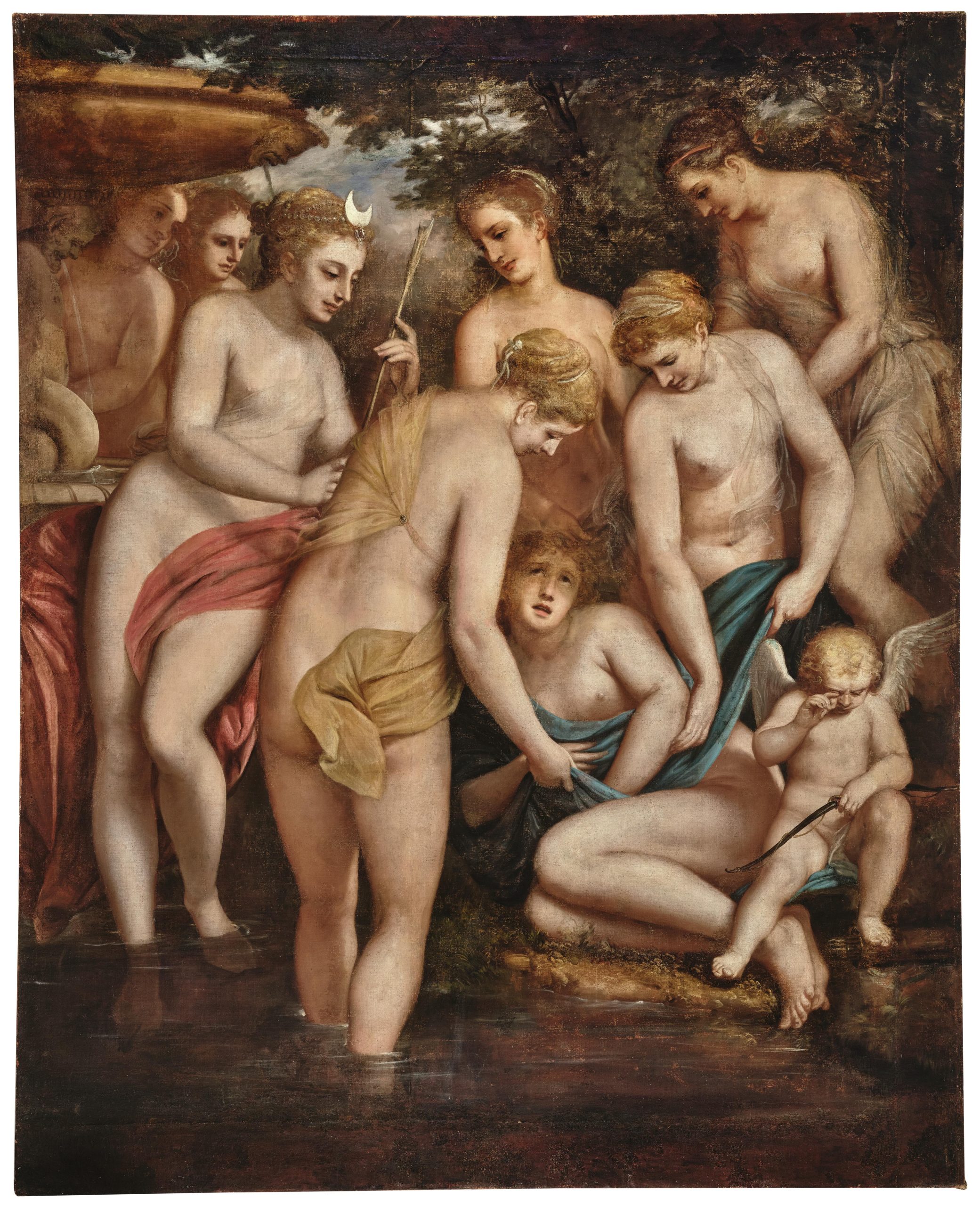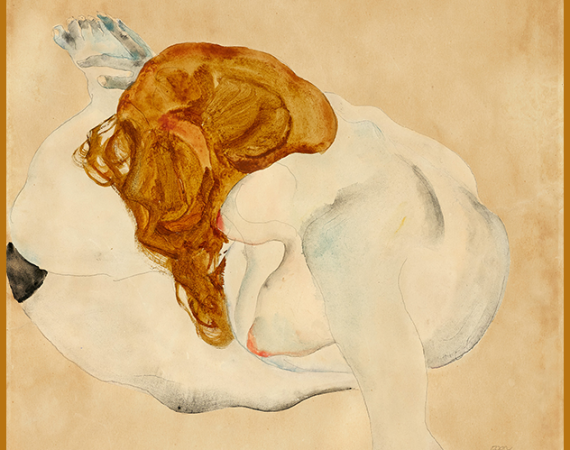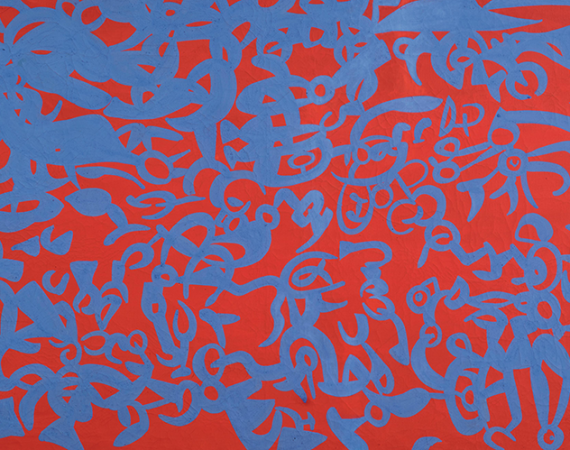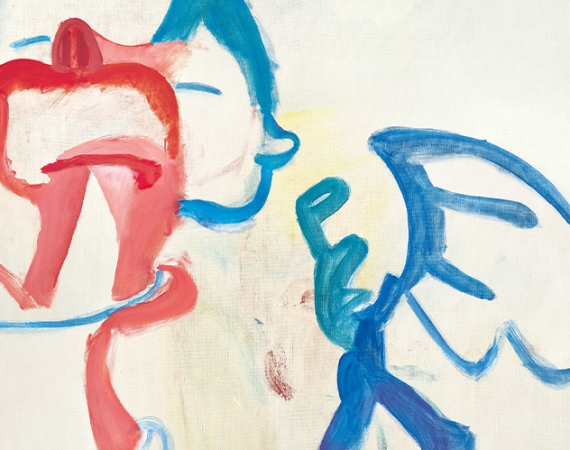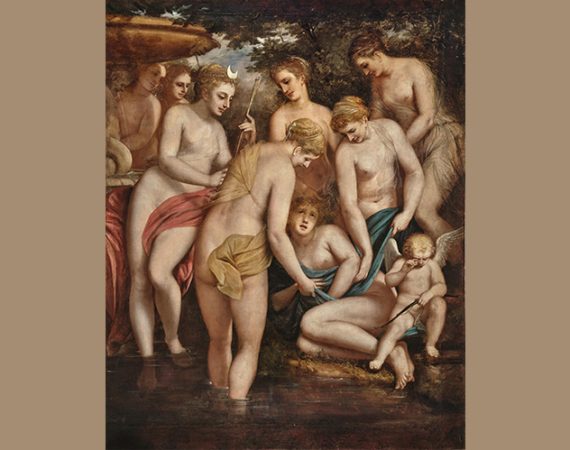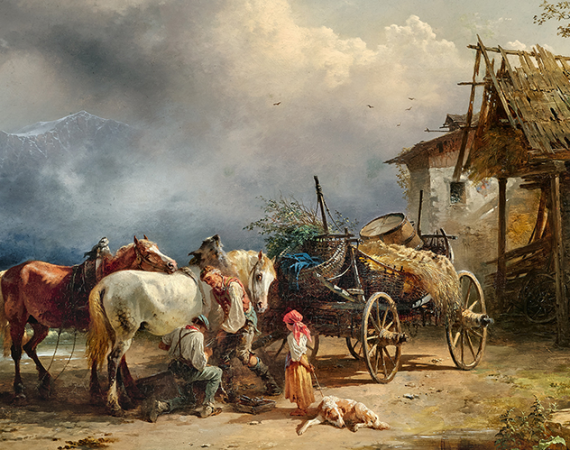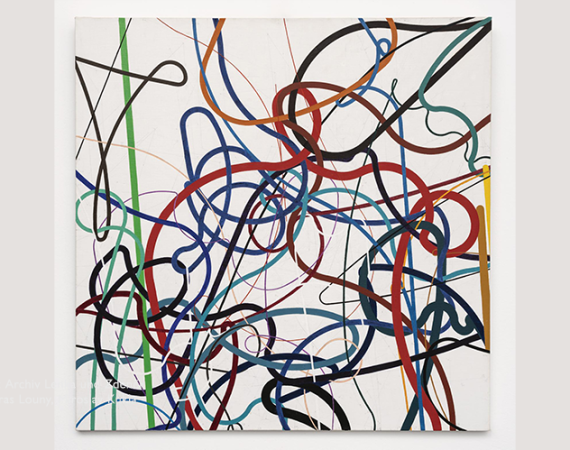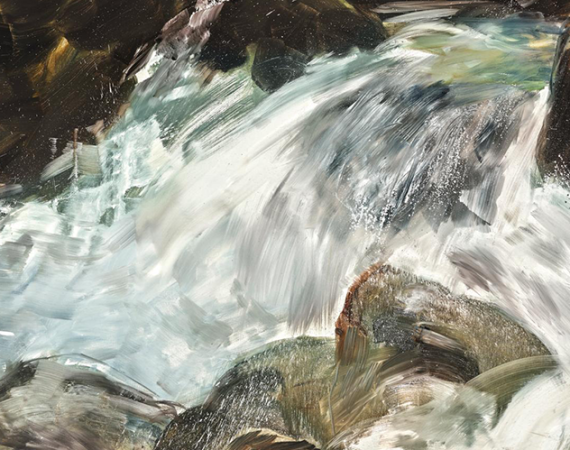Luca Cambiaso‘s Diana and Callisto is an important late work by the Genoese master and is a new art-historical discovery, probably from the celebrated art collection of Emperor Rudolph II in Prague Castle.
This newly discovered painting, which until recently has been lost to art historians, is an important late work by the Genoese artist, Luca Cambiaso (1527–1585) and is thought to have been part of the famous collection of Rudolf II in Prague. The large canvas depicts the mythological tale of Diana and Callisto painted in the sophisticated, sensuous Mannerist style of the master’s maturity. The story is taken from Ovid’s Metamorphosis: the nymph Callisto was the favourite of the Diana, virgin Goddess of the Hunt. Jupiter, King of the Gods was beguiled by her beauty, seduced her in secret and left her with child. The painting shows the dramatic moment when Diana forces her attendant to strip naked to reveal the hidden pregnancy. The painting style and the light draftsmanship are typical of the later work of Cambiaso.
Luca Cambiaso was the leading artist in Genoa in the 16th century. He is widely considered to be the founder of the Genoese School and was a prolific artist of extraordinary skill and variety. He is particularly known for his fresco painting in palaces and churches in the area of Genoa and latterly in the Escorial in Madrid. He was also a master in the use of light, creating theatrical effects well before the appearance of Caravaggio, and developed a pictorial technique of reducing human form into geometric, often cubic, parts in order achieve the correct foreshortened proportions in his paintings.
This rediscovered painting of Diana and Callisto is masterpiece of Cambiaso’s oeuvre. There is no suggestion of the intervention of assistant painters and the fact alone that the canvas is so large and the composition of the multi-figure scene so complex suggests that this was a very important commission for a patron of great stand- ing. Scholarly research into the painting’s history has revealed that this is likely to be a lost canvas that was in the renowned collection of Rudolf II in Prague.
The inventory of Rudolf’s collection taken in 1621 lists, as number 1196, Ein Bad mit Callisto von Luca de Genoa which hung in the Spanishes Saal in Prague Castle amongst 107 other Italian works by great masters such as Titan, Veronese and Tintoretto. There are two other versions of the same subject by Cambiaso, one in Kas- sel and the other in Turin. To decide which of these three was in fact the canvas in Rudolf ’s collection, it is necessary to dig deep into art historical records. There is evidence, through comparison to the works of Cambiaso’s followers such as Bartholomeus Spranger (1546–1611), and through scrutiny of the many influences that formed Rudolf ’s personal taste and his acquisitions that this, newly discovered, version is likely to be the lost Prague canvas. In addition to this, this painting has been described as “undoubtedly the most beautiful” of the three versions, by the scholar Anna Orlando and as such would have been the most likely to have been part of the foremost collection of its age.
We are grateful to Anna Orlando for her help in researching this painting.
AUCTION
Old Masters, 29 April 2025, 6 pm
Palais Dorotheum, Dorotheergasse 17, 1010 Wien
old.masters@dorotheum.at
Tel. +43-1-515 60-403

